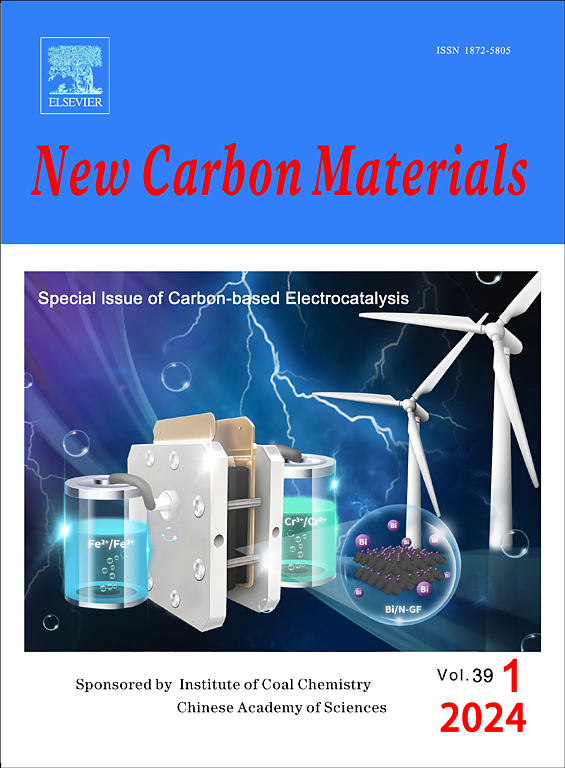Fluorescence color tuning of dual-emission carbon quantum dots produced from biomass and their use in Fe3+ and Cu2+ detection
IF 5.7
3区 材料科学
Q2 Materials Science
引用次数: 0
Abstract
Using simple and eco-friendly ethanol solvothermal treatment, dual-emission biomass carbon quantum dots (D-BCQDs) were synthesized from biomass viburnum awabuki leaves. Under excitation with 413 nm wavelength light two emission peaks appeared at 490 and 675 nm and the dots could be tuned to emit crimson, red, purplish red, purple and blue-gray fluorescence by changing the solvothermal temperature from 140 °C to 160, 180, 200 and 240 °C, respectively. XPS and FTIR characterization indicated that the fluorescence color was mainly determined by surface oxidation defects, elemental nitrogen and sp2-C/sp3-C hybridized structural domains. The D-BCQDs could not only detect Fe3+ or Cu2+, but also quantify the concentration ratio of Fe3+ to Cu2+ in a solution containing both, demonstrating their potential applications in the simultaneous detection of Fe3+ and Cu2+ ions.
生物质双发射碳量子点的荧光调色及其在Fe3+和Cu2+检测中的应用
采用简单环保的乙醇溶剂热处理技术,以川木叶为原料合成了双发射型生物质碳量子点(D-BCQDs)。在波长为413 nm的光激发下,在490 nm和675 nm处出现两个发射峰,通过将溶剂热温度从140℃分别改变为160、180、200和240℃,可以将这些点调谐为发出深红色、红色、紫红色、紫色和蓝灰色荧光。XPS和FTIR表征表明,荧光颜色主要由表面氧化缺陷、元素氮和sp2-C/sp3-C杂化结构域决定。D-BCQDs不仅可以检测Fe3+或Cu2+,还可以量化Fe3+与Cu2+在含有Fe3+和Cu2+的溶液中的浓度比,显示了它们在同时检测Fe3+和Cu2+离子方面的潜在应用。
本文章由计算机程序翻译,如有差异,请以英文原文为准。
求助全文
约1分钟内获得全文
求助全文
来源期刊

New Carbon Materials
MATERIALS SCIENCE, MULTIDISCIPLINARY-
CiteScore
6.10
自引率
8.80%
发文量
3245
审稿时长
5.5 months
期刊介绍:
New Carbon Materials is a scholarly journal that publishes original research papers focusing on the physics, chemistry, and technology of organic substances that serve as precursors for creating carbonaceous solids with aromatic or tetrahedral bonding. The scope of materials covered by the journal extends from diamond and graphite to a variety of forms including chars, semicokes, mesophase substances, carbons, carbon fibers, carbynes, fullerenes, and carbon nanotubes. The journal's objective is to showcase the latest research findings and advancements in the areas of formation, structure, properties, behaviors, and technological applications of carbon materials. Additionally, the journal includes papers on the secondary production of new carbon and composite materials, such as carbon-carbon composites, derived from the aforementioned carbons. Research papers on organic substances will be considered for publication only if they have a direct relevance to the resulting carbon materials.
 求助内容:
求助内容: 应助结果提醒方式:
应助结果提醒方式:


